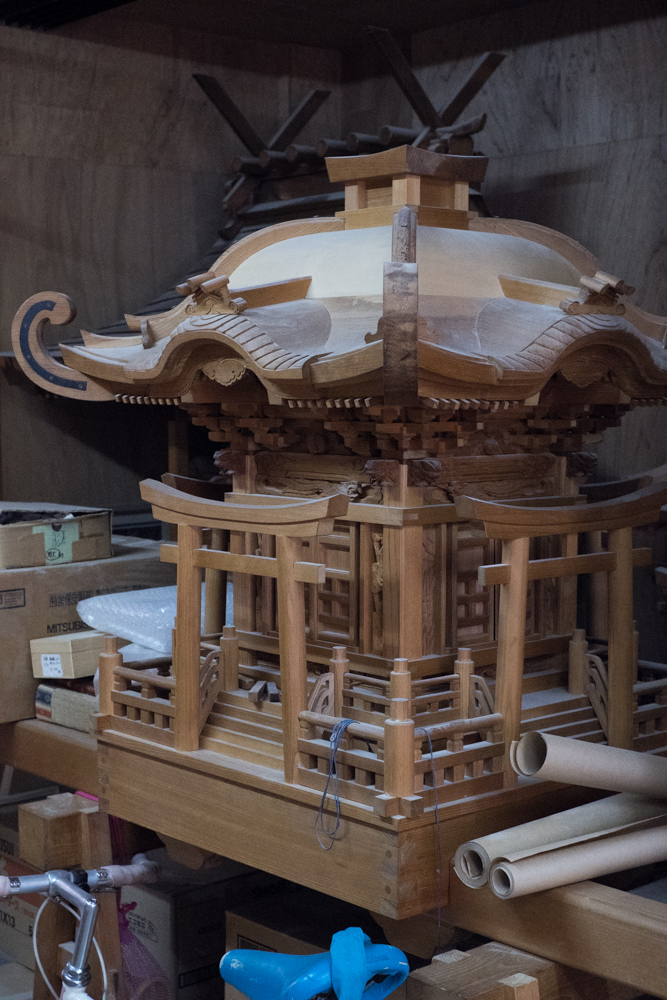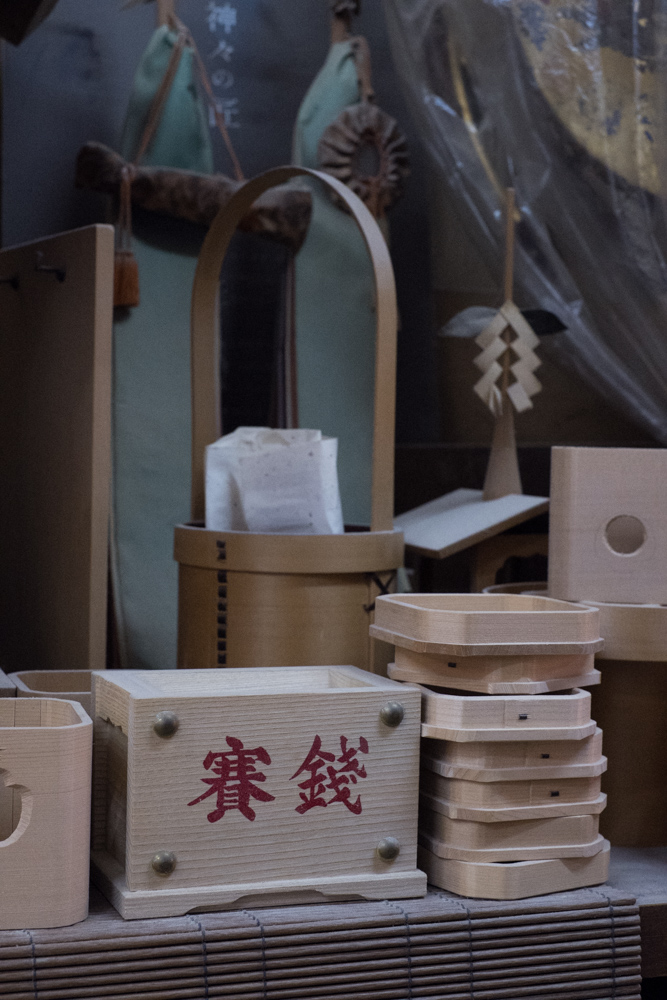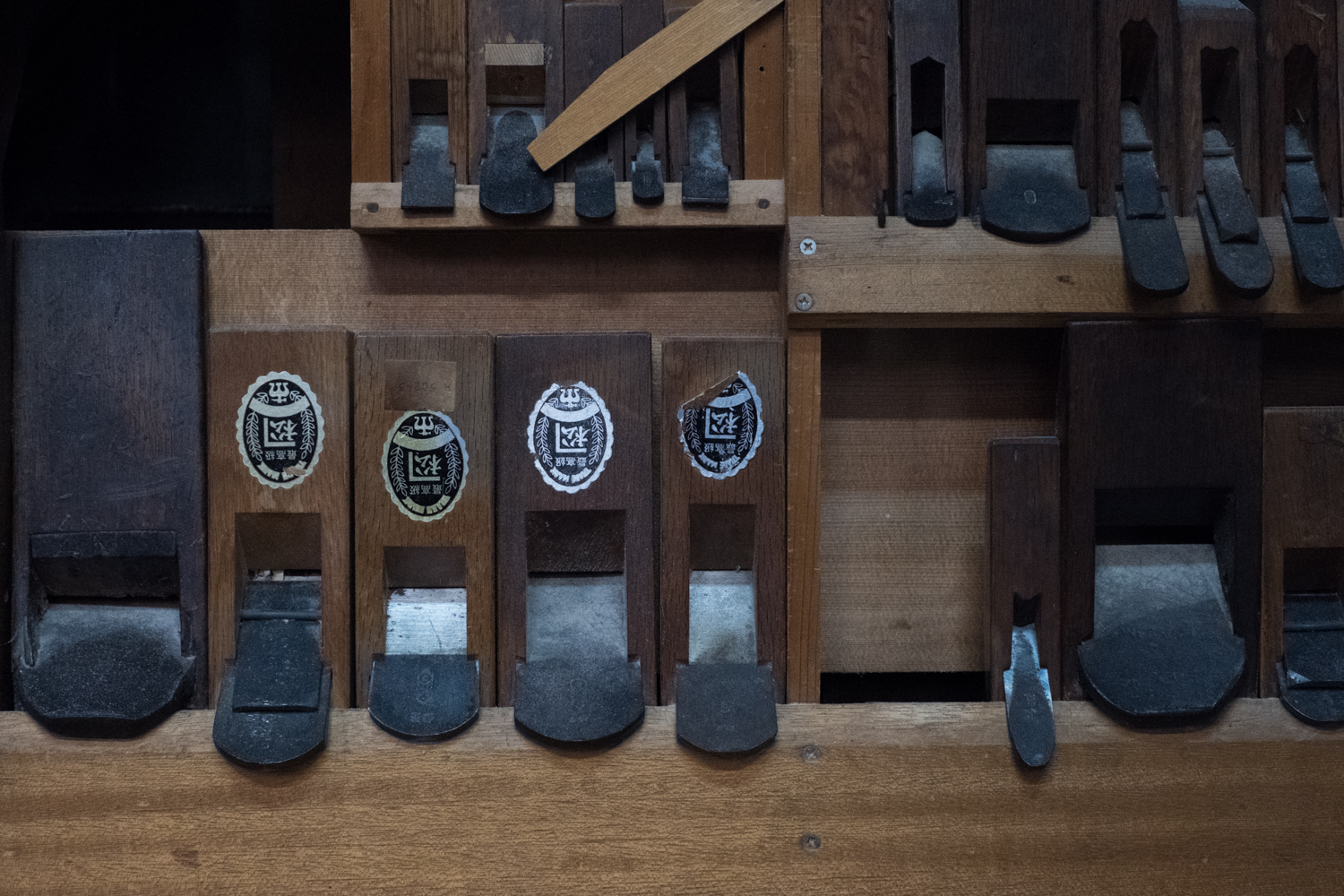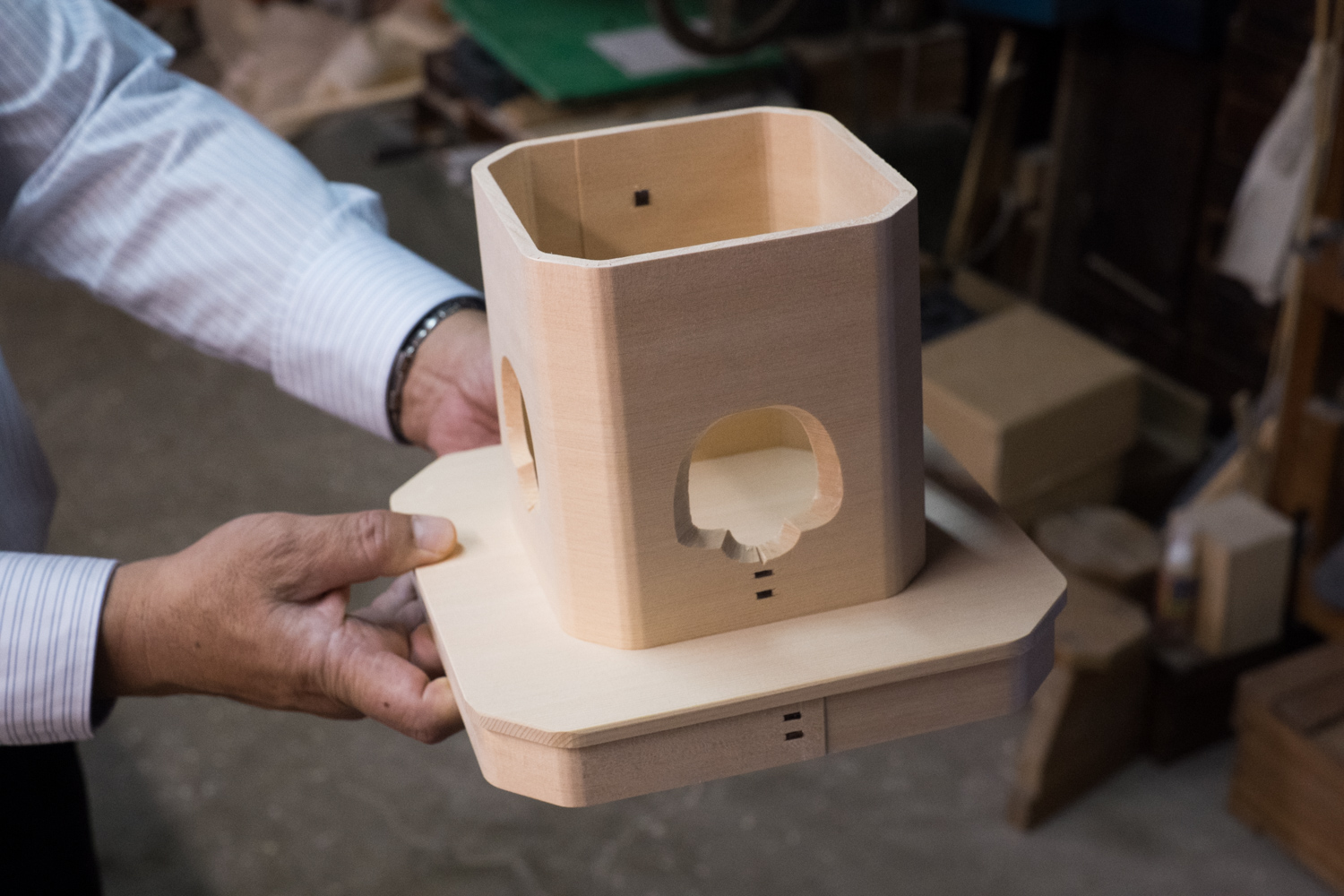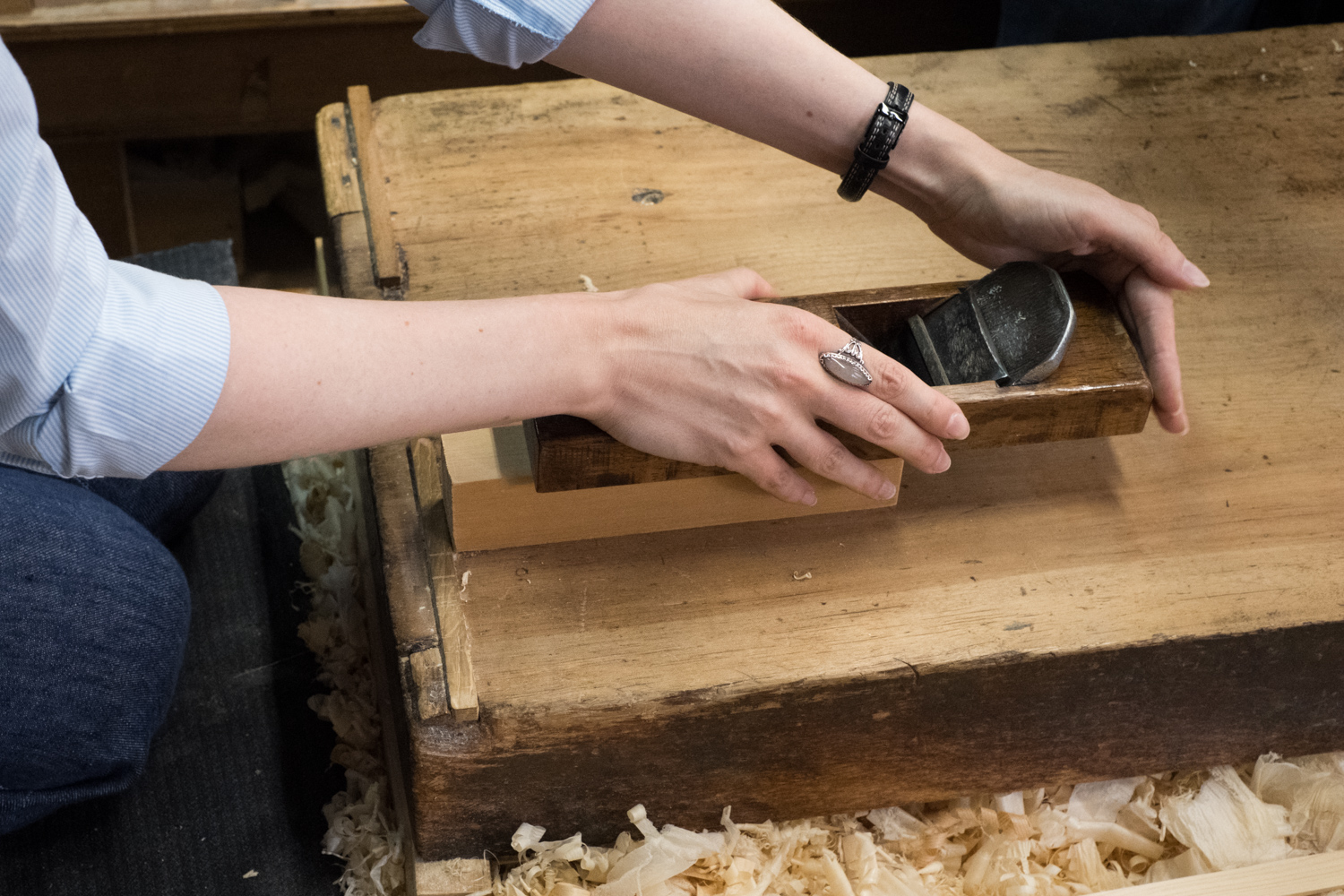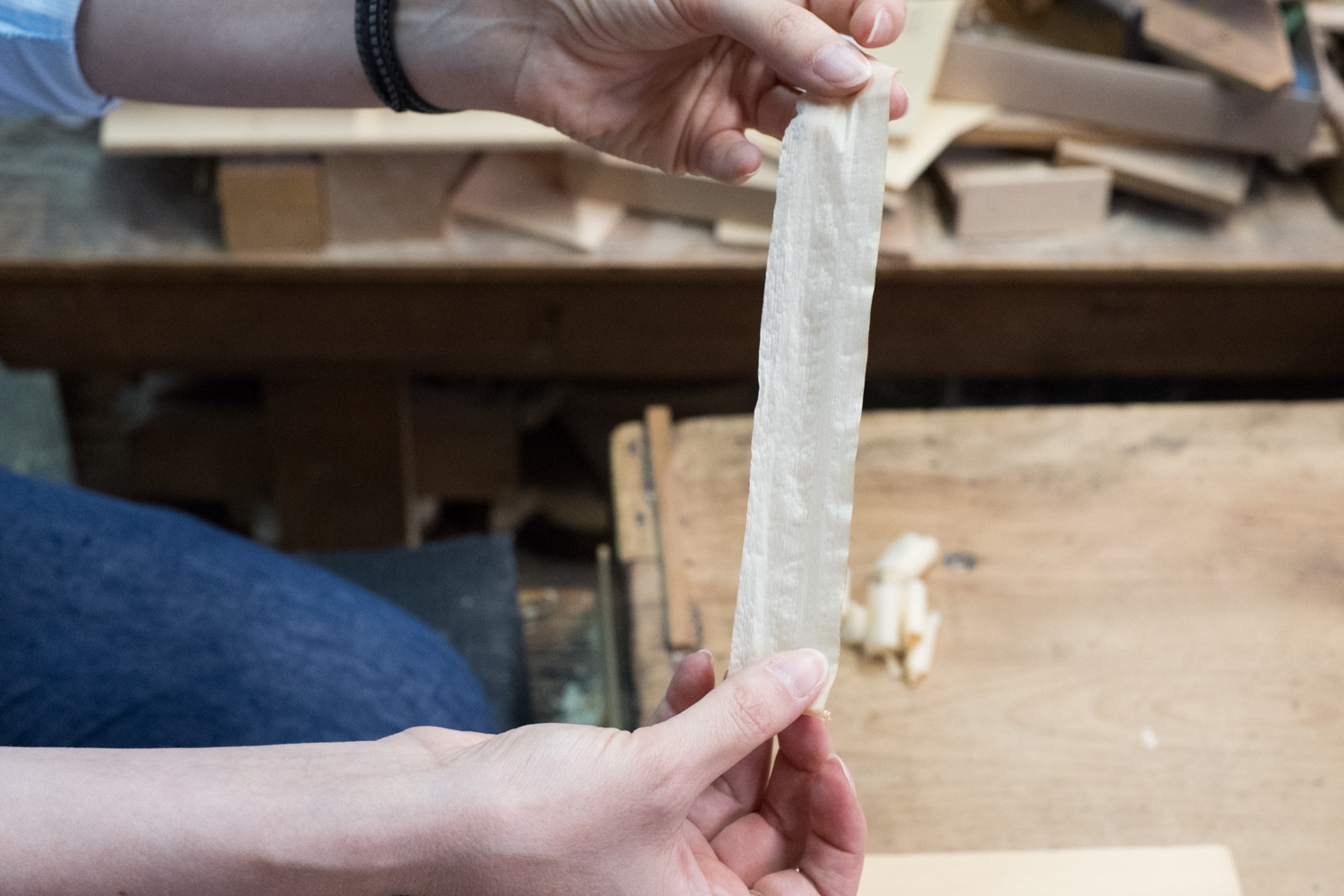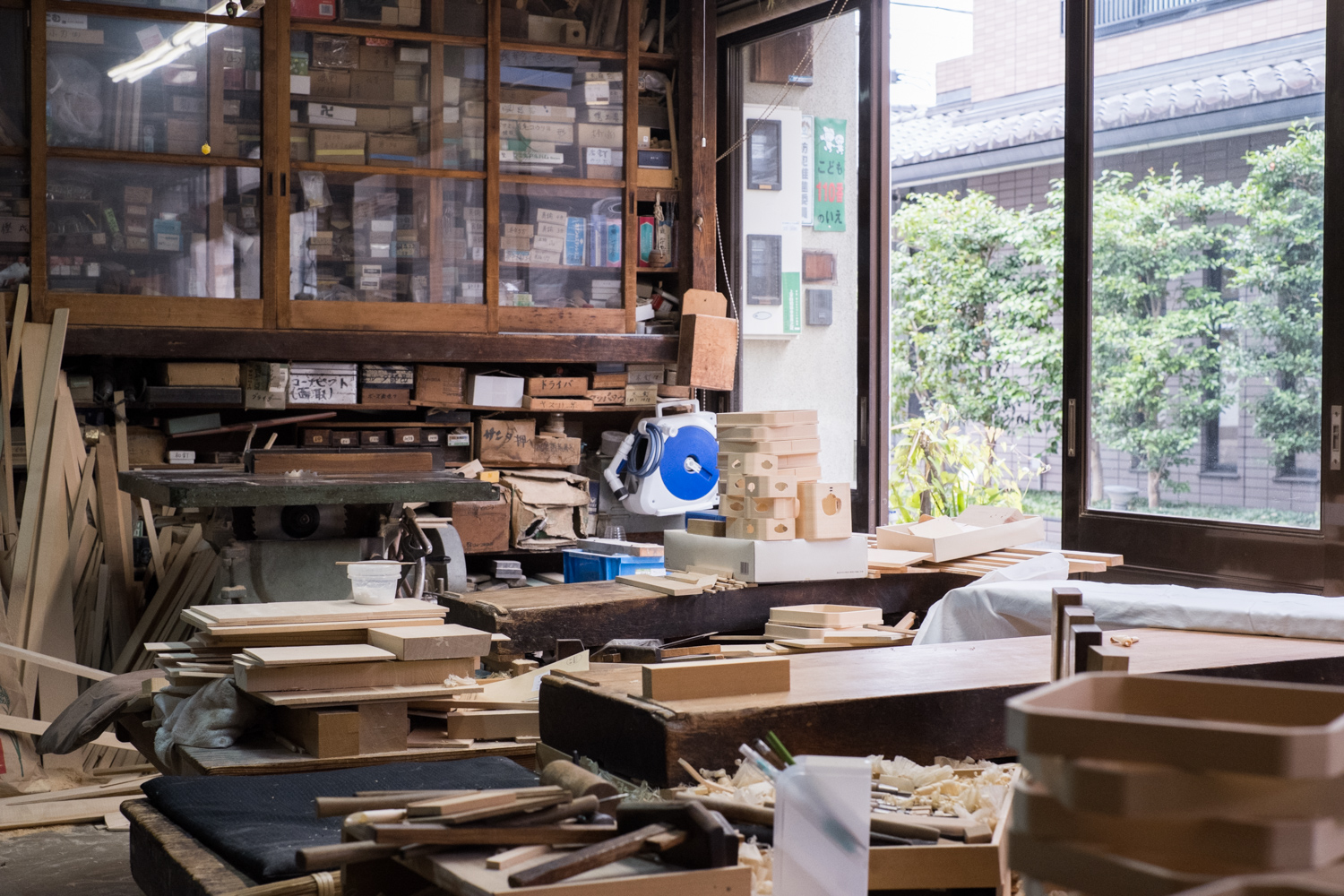Blog
Studio visit to Maki Shinto Ritual Articles Store
2023/10/17
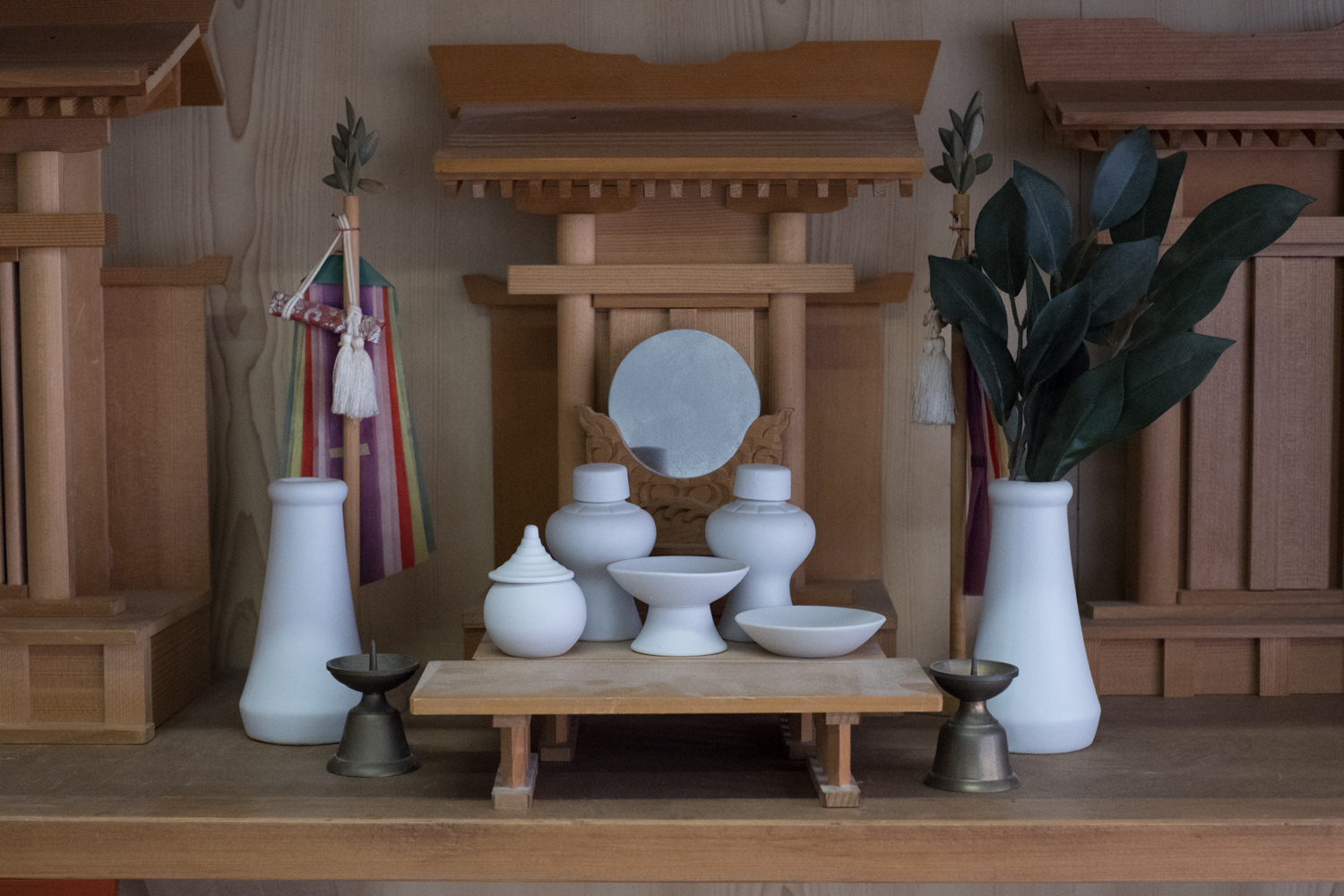
Dear Reader,
Shinto shrines hold a special place in Kyoto, embodying the essence of Japan’s historical and artisanal legacy, and shrine woodworking thrives as an art form that delicately balances spiritual reverence and skilled craftsmanship. Within this tradition, Maki Shinto Ritual Articles Store has long upheld the legacy of crafting intricate wooden works, contributing to the sacred beauty that characterizes Kyoto cultural landscape.
Woodworking related to shrines has been an integral part of Maki family legacy for four generations. Their expertise encompasses everything from crafting mikoshi (portable Shinto shrines) or kamidana (miniature household altars) to the wooden works within shrines themselves.
In this sacred craft, the significance of the materials used cannot be overstated. Hinoki cypress, renowned for its elegant white grain, symbolizes the purity at the heart of Shintoism. It serves as the quintessential wood for the construction of shrines and the fashioning of sacred ritual implements. Emphasizing the importance of maintaining an unblemished appearance, Shinto woodworking predominantly relies on straight-grained cypress devoid of any knots. Thus, a crucial aspect of the artisan’s work involves sourcing and preparing this essential material with the utmost care and attention.
Within the studio, an abundance of carefully stored wood awaits its transformation into sacred creations. However, before the wood can be utilized, it undergoes a crucial ageing process, ranging from 1 to 10 years, to eliminate excess moisture. This period of drying is essential as it prevents potential distortions that may occur over time due to the continued respiration of the wood.
Shinto craftsmanship is rooted in the ancient technique of sashimono, a method that involves assembling wooden items by carving highly complex wood joints and meticulously attaching them together without using nails. This age-old practice goes back to the traditional architectural marvels of the Nara period, where the flexibility of wood was harnessed to ensure its endurance over time. To achieve the intricate designs, an array of over 100 planes and other specialized tools are employed during the meticulous crafting process. When you visit the studio, you’ll get a chance to handle one of the planes to shave the surface of a block of hinoki wood, which isn’t as simple as it seams!
Through generations of dedication and a deep respect for their cultural heritage, Maki family has continued to preserve the artistry and sanctity embedded within the realm of shrine woodworking. Every meticulously crafted piece serves as a testament to their unwavering commitment to upholding the core principles of Shinto tradition, ensuring that its legacy remains intact for the generations that follow.
If you plan to visit the studio and learn more about Shinto shrine woodworking techniques, book your experience here: Maki Shinto Ritual Articles Store
Words & images by Anastasiya Bulkavets (ArigatoCreative.co)
